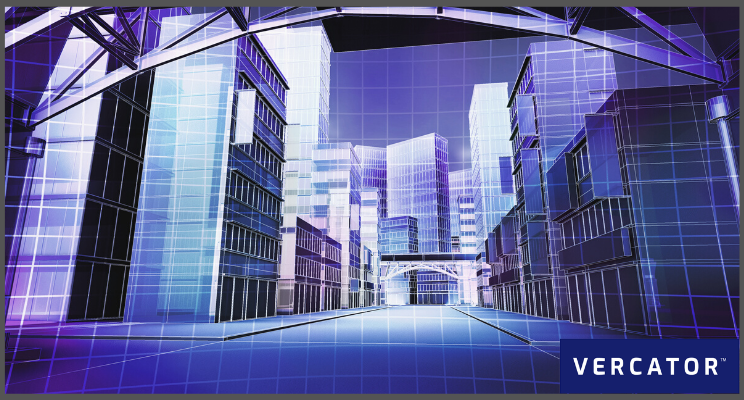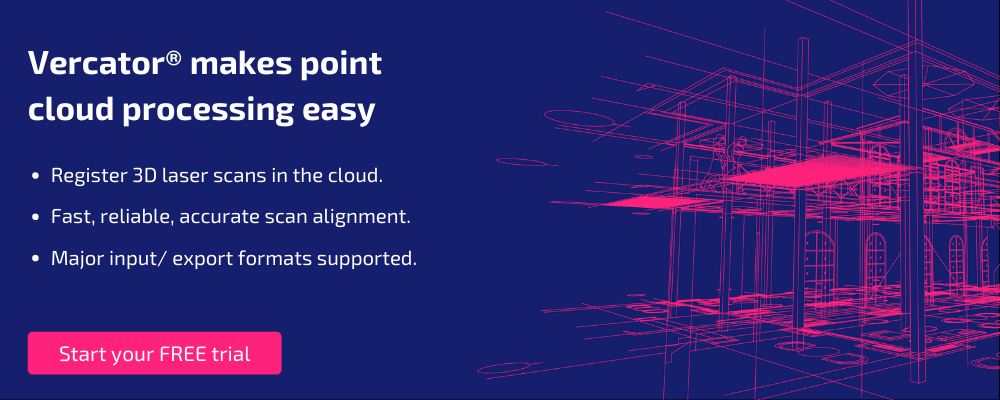How to Get Started with 3D SLAM as a Surveyor

SLAM is all set to be the next big thing in surveying. While it’s still early days, surveyors need to understand and incorporate this evolving technology. The question when adopting any new technology is always "when is the best time?" and the answer is always "it all depends".
Here, we're going to explain how surveyors can best use SLAM. That means explaining the basics of software, hardware and processes in order to help you decide when it’s right to dip your toe in the water.
We'll look at the easiest ways to get a SLAM pilot underway and show how having cloud-based registration software can take you to the next stage faster,
So, first step — What exactly is SLAM?
Suggested reading: This is a quick guide to getting started with SLAM. If you want the long version, check out our free ebook — How SLAM Enables the Evolution of Wearable Reality Capture Technology.
Step 1: Understand SLAM's strengths and weaknesses
There's always been a need for automation in surveying for workflows in order to improve efficiency and workplace safety. If you can free up humans to do more important tasks, machines can do the more repetitive or hazardous ones. SLAM opens up a world of autonomous robots and rapid scanning technology.
What is SLAM?
To make sense of SLAM, it's first critical to know what we are talking about. SLAM, or "Simultaneous Localisation and Mapping", is a set of algorithmic techniques used for updating a map of an unknown environment while keeping track of your location within it.
SLAM uses devices/sensors to collect visible data (camera) and/or non-visible data (RADAR, SONAR, LiDAR) with basic positional data from Inertial Measurement Units (IMU). Together, these sensors collect data and build a picture of the surrounding environment. The SLAM algorithm helps to best estimate the location/position within this surrounding environment.
Why should surveyors see SLAM as disruptive?
The simple answer is speed and scalability. SLAM makes it far simpler and faster to capture site data and produce a 3D map. Effectively SLAM enables surveyors to just walk around a site location and capture the needed data using a wearable, SLAM-enabled device — automating the technical skills and expertise required to place and reposition static scanners every time a new scan is made.
Faster and simpler scanning opens up new data capture opportunities. This reduced the barrier to entry, allows less expert individuals to carry out surveys, and will make 3D scanning technology far more widely available.
What is SLAM good for?
SLAM is excellent for rapid information capture. It comes into its own in locations where there is no or minimal availability of GNSS data for positioning, and rapid mobile scanning is necessary. Since SLAM allows mapping and positioning without an additional source of positional information, it is perfect for indoor mapping.
What are SLAM’s weaknesses?
SLAM’s weakness is precision. SLAM algorithms are attempting to solve a chicken and egg problem. By introducing uncertainty about the location of the scanner, a SLAM-derived map will never be as precise as one created with static laser scans.
In the future, the difference in outcomes may reduce. For now, it’s an important factor to consider. Fundamentally, you should not use SLAM to create 3D maps that will be used to make structural measurements. However, not every scan needs to be made with the same level of precision. For example, 3D laser scanners are used within workflows (without being mapped onto a survey control point created with a total station) even though this will produce a less precise output.
The use of SLAM, like any tool, is context-dependent. SLAM is best used when applied for the right job. Less accurate scans can be produced more frequently, quickly and cheaply for new types of applications. Particularly when integrated with BIM (Building Information Modelling), the number of use cases for scans at all different LoDs (Levels of Detail) rapidly expands.
Step 2: Getting the right software and hardware
The reality is that SLAM is already changing workflows. Brands like GeoSlam, Paracosm and NavVis have scanners on the market, and these scanners are being used right now. The hardware itself is not cheap, but process and time savings can be vast.
Aspects of SLAM are also becoming increasingly common in static scanners. Some Z+F and Faro static scanners already incorporate accelerometers and compasses, and Leica's RTC360 static scanner uses full visual SLAM (they call it VIS) between static scans to aid with rough alignment. While developments in hardware are important, there is a more extensive software picture driving the uptake of SLAM.
Software for sensor fusion
To perform SLAM more accurately, sensor fusion comes into play. Sensor fusion combines data from multiple sources and sensors to refine the output from the data that is gathered. Basically, you can offset the problems caused by one sensor type with the advantages of another.
What's needed is a flexible and automated software platform (accessible through the cloud — more of that later) to take mobile SLAM data sets and rapidly align them with other data types. Such software technology is critical to a fusion-orientated outcome and for SLAM's effective use within a wider reality capture workflow.
Step 3: Deploying flexible, cloud-based registration
SLAM-derived scans, particularly LiDAR-based SLAM, are effectively point clouds. A modern approach to registration applying multi-stage, vector-based algorithms can accelerate the combination of multiple SLAM data sets. This also provides a means of combining mobile scan data outputs with traditional point cloud data sets — and makes doing so using cloud-based tools far more effective.
Point clouds in the cloud
The cloud is another technology that is disrupting surveying. It’s changing how outputs are shared with clients and across teams. However, it’s also significantly changed point cloud processing of static laser scanner outputs. The creation of far more stable algorithms allows for the automation of processing — making it possible to take advantage of scalable computing power available in the cloud. This can enable the parallelization of tasks, and the dramatic acceleration of processing time, even for the largest data sets.
Fundamentally, the cloud can deliver savings in time and increased quality for the complete cycle of project creation, implementation, hand-over and management. It makes it easier to use SLAM at the right time, and another tool when it’s not appropriate.
Suggested reading: If you want to learn more about the potential of the cloud to surveying, check out our ebook — Are You Ready for the Cloud?
Step 4: Trialling a SLAM pilot
So you are now ready to get started on SLAM, But how? The key stages can be boiled down to three stages — education, experimentation and seeking synergy.
Stage 1: Education — understand how SLAM can help you today
Researching what is out there is key to gaining quick wins. You may be lucky in that there is an obvious need based on your particular sector or industry:
For example:
- Scanning otherwise inaccessible locations.
- Location restrictions leading to the need for faster on-site scanning.
- Scanning dangerous locations.
Always keep in mind that you are looking to apply SLAM to expand the flexibility within your operation. Make sure you can see ways to incorporate SLAM data into your broader reality capture data sets.
Stage 2: Experimentation — set expectations
Understand SLAM's weaknesses and make sure not to over-invest too quickly. You need to apply SLAM only to jobs where its capabilities support the right outcome.
Focus on your problems that you think SLAM will address, but always have an eye on the future. Think about the use cases — efficiency, effectiveness and safety — to build your business case. Set up a pilot and aim to learn as much as you can, as quickly as you can.
Stage 3: Synergy — think about how SLAM can help you tomorrow
We seem to be on the brink of a SLAM revolution. Developments such as these will be disruptive and can open the door to new projects and applications. Critically, think about how you will integrate SLAM with broader data sets, and consider how those needs will change as SLAM (and your application of SLAM) evolves.
Software eats hardware
More SLAM-capable devices will inevitably come on to the market. Some will add features to existing scanners to speed up scanning time; some will be hand-held, or back-pack models with LiDAR capability; some will be autonomous robots with LiDAR capability.
However, remember the old phrase "software eats hardware". Software that consolidates, processes and presents scan data will be vital to the success of SLAM projects. Ultimately, by starting early on your SLAM journey, you will be able to evaluate and use the right tools for the right job.
By paying attention now, you can develop better ways to incorporate SLAM into your workflows and benefit your business. Get in touch if you want to learn more about how Vercator can help you more flexibly engage with SLAM, and integrate mobile data sets within your broader workflows. Or check out our ebook — How SLAM Enables the Evolution of Wearable Reality Capture Technology.

